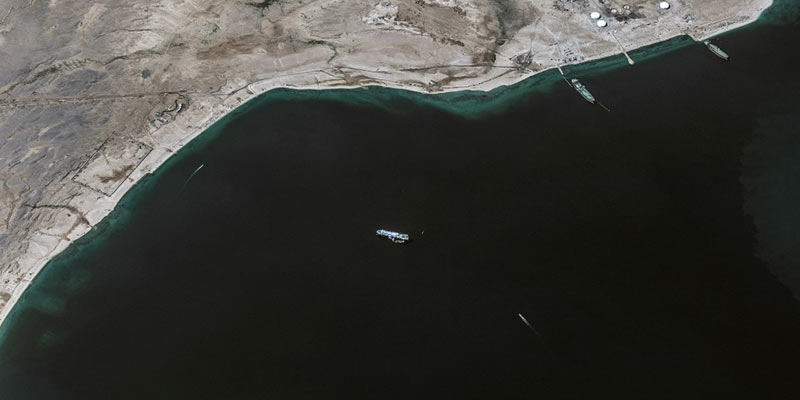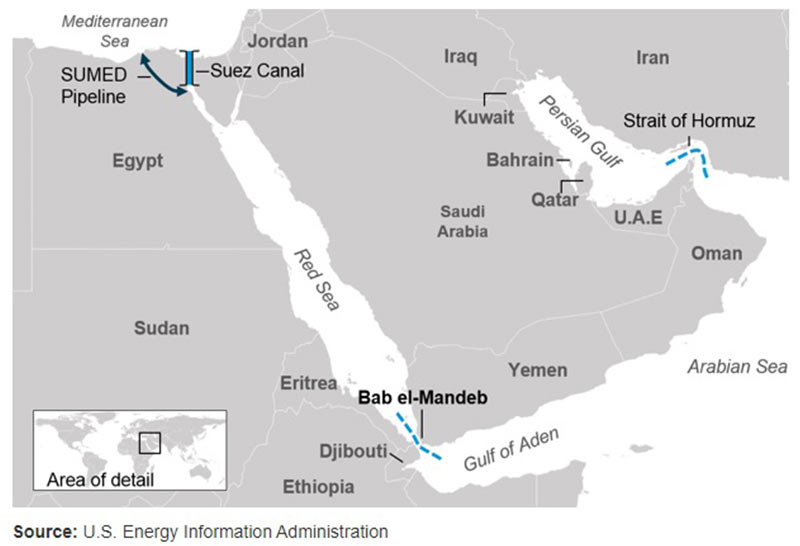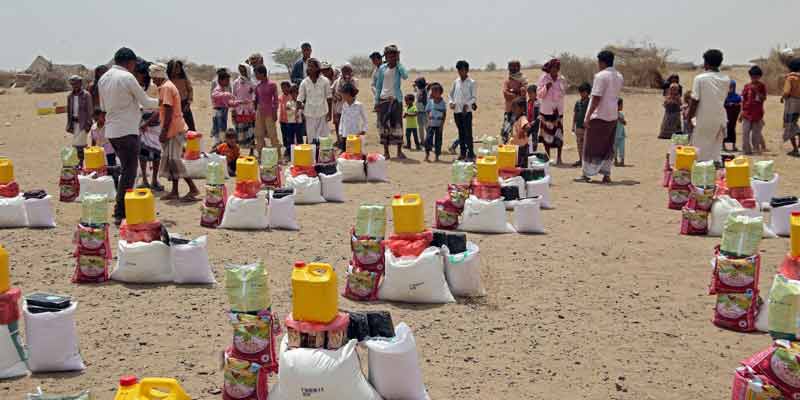- World
- Jan 19
Explainer - Houthi attacks and Red Sea crisis
• India said it is deeply concerned over the unfolding security situation in the Red Sea and the Gulf of Aden.
• The Red Sea is a critical waterway and a major commercial corridor that facilitates international trade.
• On January 17, an Indian warship intercepted a cargo vessel with 22 crew members including nine Indians after it came under a drone strike in the Gulf of Aden.
• The government is closely monitoring the developments in the critical sea lanes.
Red Sea
• The Red Sea and the Gulf of Aden constitute one of the world’s major shipping routes. As well as enabling global trade, these waters also present immense opportunities for development and prosperity in the bordering countries.
• Strategically connecting Europe and Asia, the Red Sea stretches from the Suez Canal through the Bab el-Mandeb Strait to the Gulf of Aden.
• Its waters constitute one of the most critical maritime routes enabling global trade but also presenting immense opportunities for development and prosperity in the region.
• Nearly 15 per cent of global seaborne trade passes through the Red Sea.
• However, increasing regional instability, conflict, piracy and transnational organised crime endanger the freedom of navigation of vessels transiting through those waters and limit investment into port infrastructure and maritime commerce.
Crisis in Red Sea
• The Iran-backed Houthi militants, which control large parts of Yemen, have attacked numerous commercial ships in the Red Sea since November 2023.
• The Houthis have launched unprecedented attacks against international maritime vessels in the Red Sea and Gulf of Aden, as well as military forces positioned in the area to defend the safety and security of commercial shipping.
• Houthis control the capital Sanaa and large swathes of Yemen, including the Red Sea coast. They began targeting what they believe to be Israel-bound vessels in mid-November after first launching missile and drone attacks against Israel itself, in support of the extremist group Hamas.
• Now, they have widened their aim to all international shipping companies, until Israel allows full humanitarian supplies to enter Gaza.
• The US blames that Iran offers its support for the Houthis to attack merchant and commercial ships passing through the Red Sea and the Bab el-Mandeb strait. The US has also strongly warned Iran to cease providing weapons to the Houthis.
• In December 2023, the US launched Operation Prosperity Guardian by bringing together multiple countries including the United Kingdom, Bahrain, Canada, France, Italy, Netherlands, Norway, Seychelles and Spain, to jointly address security challenges in the Red Sea and the Gulf of Aden.
• The operation is a new multinational security operation under the umbrella of the Combined Maritime Forces and the leadership of Task Force 153, which focuses on security in the Red Sea.
• On January 12, the US and the UK launched air strikes targeting the Houthi positions in Yemen, following which the Houthis vowed to retaliate.
• The UN Security Council has passed a resolution condemning the multiple attacks by Houthi rebels off the coast of Yemen which have disrupted global trade and raised fears of further spillover from the war in Gaza.
• The attacks are already having wide-ranging effects.
• The disruptions led to a drastic cut in the number of vessels using the Suez Canal route.
• Many companies have diverted ships far to the south around the Cape of Good Hope, driving up costs and threatening to disrupt the entire global supply chain.
• Circumnavigation adds an estimated one to two weeks to journeys, and leads to longer transit times, more fuel spent, more ships required, and increasing the cost of shipping and of shipped goods. Shipping insurance costs have skyrocketed.
• Persistent disruption to trade in these shipping lanes could cause costs to rise globally. This is especially true for the energy sector, which depends on the Red Sea and the Suez Canal for transit of almost 8 per cent of liquefied natural gas and 10 per cent of seaborne oil.
Yemen crisis
• Yemen has been facing a protracted political, humanitarian and developmental crisis
since uprisings broke out in 2011.
• With 80 per cent of the population in need of humanitarian aid and protection, it faces one of the largest humanitarian crises in the world.
• Yemen’s civil war escalated in 2015 as a result of clashes between Yemeni government forces and the Houthis — also known as Ansar Allah.
• The warring sides in the long-running conflict in Yemen have committed to steps towards a ceasefire and engage in a United Nations-led peace process.
• Over the past nine years, conflict and economic decline have taken a heavy toll on civilians, forcing millions to flee their homes.
• Even before the current crisis, Yemen was the most vulnerable country in the Middle East. It regularly ranked among the world’s worst in malnutrition rates with half of its population living in poverty and without access to safe water.
• After years of conflict, the national socioeconomic systems of Yemen remain on the edge of total collapse, while conflict, large-scale displacement and recurring climate shocks have left families vulnerable to communicable diseases outbreaks.
• An estimated 4.5 million people are currently displaced, most of whom have been displaced multiple times over a number of years.
• Millions of children lack access to safe water, sanitation and hygiene services, and the country continues to experience regular outbreaks of cholera, measles, diphtheria and other vaccine-preventable diseases.
• Violence against women and girls, already high before the conflict, has worsened, with displaced women and girls, female-headed households and those with disabilities particularly at risk.
• Girls are increasingly vulnerable to child marriage, human trafficking and child labour. As needs soar, protection systems are at best overstretched or entirely absent.
Manorama Yearbook app is now available on Google Play Store and iOS App Store



